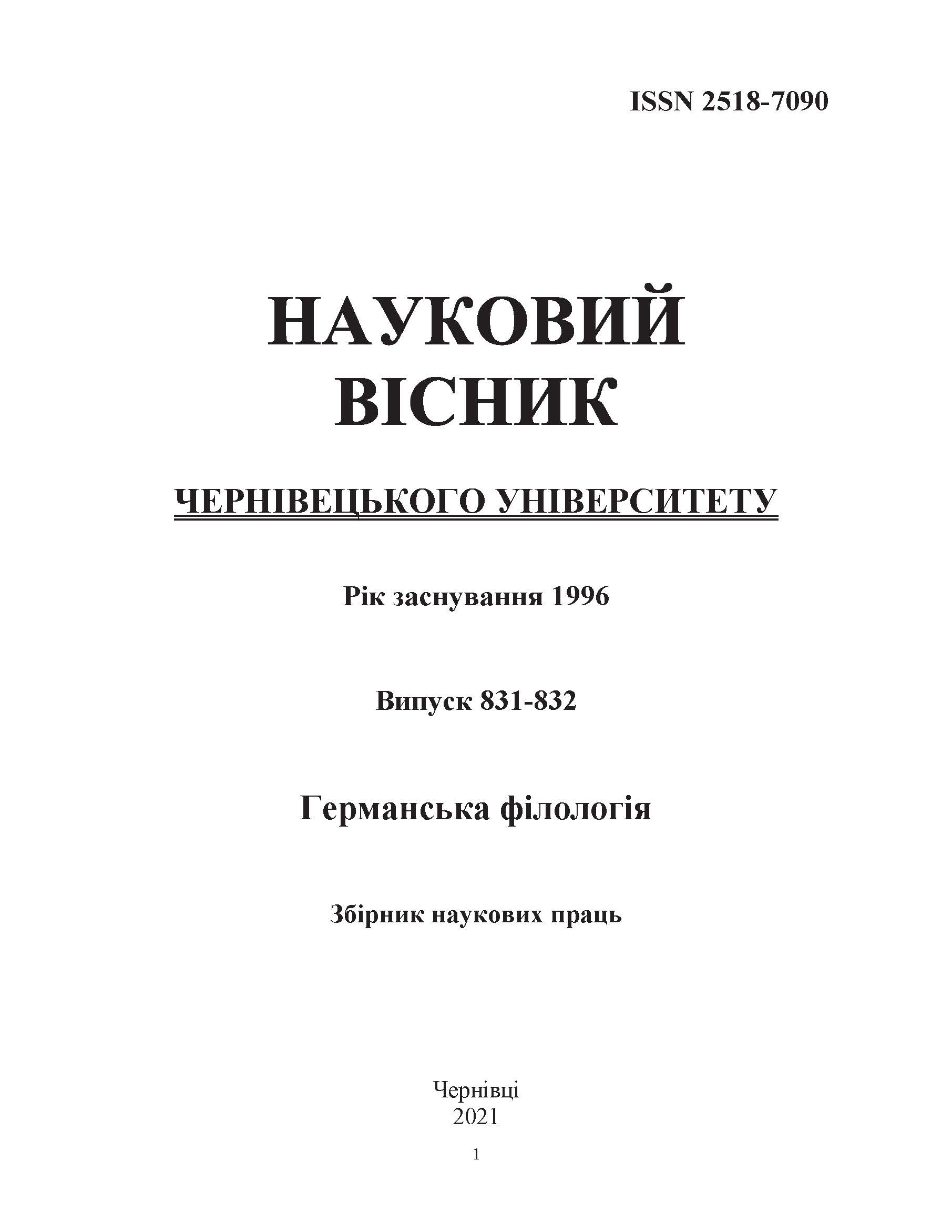ЛЕКСИКО-СЕМАНТИЧНА ПІДСИСТЕМА СЕНСОРНИХ ДІЄСЛІВ У СИСТЕМІ ДІЄСЛОВА СУЧАСНОЇ АНГЛІЙСЬКОЇ МОВИ
DOI:
https://doi.org/10.31861/gph2021.831-832.35-48Ключові слова:
сенсорні дієслова, лексико-семантичний, семантичні ознаки, семантична група, синонімічний рядАнотація
У статті досліджується лексико-семантична підсистема сенсорних дієслів у призмі системи дієслів сучасної англійської мови. Метою дослідження є аналіз семантичних особливостей сенсорних дієслів сучасної англійської мови відповідно до п’яти видів процесу чуттєвого сприйняття, установлення макро- та мікроінтегральні зв’язків між дієслівними лексемами та виокремлення їх груп і синонімічних рядів за диференційною ознакою та денотативною семою. Дане дослідження проведене за допомогою методів дефініційного, компонентного, порівняльного, зіставного та кількісного аналізів з використанням тлумачних словників і тезаурусів англійської мови. Сенсорні дієслова усіх п’яти лексико-семантичних полів мають приблизно однакову пропорцію лексем, що утворюють ядро, основну частину та периферію кожного відповідного лексико-семантичного поля на позначення процесу чуттєвого сприйняття та в цілому всієї сенсорної підсистеми процесу сприйняття, з незначно вираженою більшою часткою сенсорних дієслів в основній частині. За джерелами походження сучасний словник сенсорної підсистеми на позначення процесу чуттєвого сприйняття на третину складається з давньоанглійських сенсорних дієслів, на майже половину із запозичених лексем із французької і латинської мов, десята частина це сенсорні дієслова, запозичені із західно-германської групи мов, і незначний відсоток це запозичення з інших мов, сенсорні
дієслова невідомого походження або імітативного походження. Досліджена і проаналізована частка сенсорних дієслів сучасної сенсорної підсистеми відповідно до періодів розвитку англійської мови. Сенсорні дієслова середньоанглійського та новоанглійського періодів складають більшу половину сенсорного словника сучасної підсистеми на позначення процесу чуттєвого сприйняття. Встановлено, що у сучасній підсистемі процесу чуттєвого сприйняття сенсорні дієслова об’єднуються у групи та синонімічні ряди за сімома диференційними ознаками. Наповненість цих груп та рядів суттєво відрізняється. Результати дослідження зв’язків між сенсорними дієсловами свідчать, що вони є неізольовані в своїх лексико- семантичних полях та в цілому в сенсорній підсистемі процесу чуттєвого сприйняття, тобто вони мігрують між сенсорними лексико-семантичними полями. Всі лексеми сенсорної підсистеми процесу чуттєвого сприйняття ієрархічні, входять до ієрархії лексико-семантичних утворень та імпліцитно мають усі ознаки вищих ступенів ієрархії. Отже, лексико-семантичні поля сенсорних дієслів є відкритими системами.







